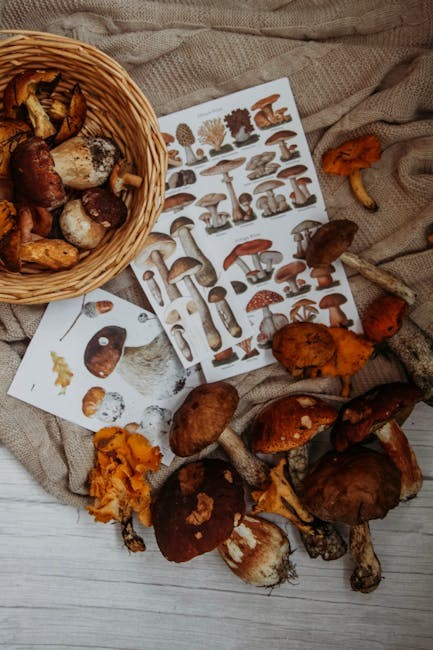A comprehensive exploration of rubs, covering their composition, application, and diverse flavor profiles. This guide provides insights into dry and wet rubs, comparing them to marinades. Learn step-by-step application techniques, resting times, bark creation, homemade recipes, storage tips, and specific examples like Traeger Rub.
Embark on a flavorful journey into the world of rubs, where culinary creativity meets the art of seasoning. This introduction serves as your gateway to understanding the transformative power of rubs in elevating your barbecue and grilling experiences. Discover how a simple blend of herbs, spices, and other ingredients can unlock a symphony of flavors, enhancing the natural taste of meats, poultry, and even vegetables.
Rubs, in their essence, are more than just seasoning; they are a culinary canvas upon which you can paint your desired flavor profiles. Whether you crave the smoky depths of a Texas-style brisket or the sweet and savory notes of perfectly grilled pork chops, a well-crafted rub can be your secret weapon.
Explore the history and origins of rubs, tracing their roots to various cultures and culinary traditions around the globe. Understand the fundamental principles behind their effectiveness, from the Maillard reaction to the art of balancing sweet, savory, and spicy elements. This introduction will equip you with the knowledge and inspiration to confidently navigate the world of rubs and create your own signature blends.

What is a Rub?
A rub, at its core, is a mixture of seasonings applied to food, typically meat or vegetables, before cooking. It’s a blend of dry or wet ingredients designed to impart flavor and enhance the overall culinary experience. Unlike marinades, which involve soaking food in a liquid mixture for an extended period, rubs are applied directly to the surface, creating a flavorful crust and enhancing the natural taste of the ingredients.
The beauty of a rub lies in its versatility. It can be tailored to suit a wide range of cuisines and flavor preferences, from sweet and smoky to spicy and savory. The composition of a rub typically includes a combination of herbs, spices, salts, sugars, and other flavor enhancers, carefully balanced to create a harmonious blend.
Rubs are primarily used for dry cooking methods such as grilling, roasting, and smoking, where the direct heat helps to caramelize the rub and create a flavorful bark on the surface of the food. Whether you’re a seasoned pitmaster or a novice home cook, understanding the basics of rubs is essential for achieving delicious and memorable results.
Dry Rubs: Composition and Usage
Dry rubs are the cornerstone of barbecue and grilling, celebrated for their simplicity and ability to create a flavorful crust. Their composition typically involves a blend of dried herbs, spices, salt, and sugar, creating a versatile seasoning that can be customized to suit any palate. Common ingredients include paprika, garlic powder, onion powder, black pepper, cayenne pepper, brown sugar, and various dried herbs like oregano, thyme, and rosemary.
The key to a successful dry rub lies in the balance of flavors; Salt enhances the natural taste of the meat, while sugar caramelizes during cooking, creating a sweet and savory bark. Spices add depth and complexity, while herbs provide aromatic notes that complement the overall flavor profile.
To use a dry rub, simply apply it generously to the surface of the meat, ensuring even coverage. Pat the rub into the meat to help it adhere, and allow it to sit for at least 30 minutes before cooking. This allows the flavors to penetrate the meat and create a more pronounced taste. Dry rubs are ideal for low and slow cooking methods like smoking and barbecuing, where the extended cooking time allows the flavors to meld together and create a truly unforgettable culinary experience;
Wet Rubs: Composition and Usage

Wet rubs offer a different approach to flavoring meat, incorporating a liquid component to create a paste-like consistency. This allows the rub to adhere more easily to the meat’s surface, creating a flavorful coating that can penetrate deeper into the tissues. The composition of wet rubs typically includes a base of oil, vinegar, mustard, or Worcestershire sauce, combined with dried herbs, spices, salt, and sugar.
The addition of liquid enhances the flavors of the dry ingredients, creating a more intense and complex taste profile. Wet rubs are particularly well-suited for cuts of meat that benefit from added moisture, such as chicken and pork. The liquid helps to keep the meat moist during cooking, preventing it from drying out and ensuring a tender and juicy final product.
To use a wet rub, simply apply it generously to the surface of the meat, ensuring even coverage. Massage the rub into the meat to help it adhere, and allow it to marinate for at least 30 minutes before cooking. This allows the flavors to penetrate the meat and create a more pronounced taste. Wet rubs are ideal for grilling, roasting, and smoking, where the added moisture helps to create a flavorful and tender result.
Rubs vs. Marinades
While both rubs and marinades serve the purpose of flavoring meat, they differ significantly in their composition, application, and effects. Rubs, whether dry or wet, are primarily surface treatments designed to impart flavor to the exterior of the meat. They typically consist of a blend of spices, herbs, salt, and sometimes sugar, which are applied directly to the meat’s surface.
Marinades, on the other hand, are liquid-based mixtures that the meat is submerged in for an extended period. In addition to flavoring agents, marinades often contain acidic ingredients like vinegar, citrus juice, or wine, which help to tenderize the meat by breaking down muscle fibers;
The primary function of a rub is to create a flavorful crust or bark on the surface of the meat during cooking. They don’t penetrate deeply into the meat. Marinades, however, are designed to infuse flavor throughout the meat, and the acidic components can also improve its texture. While rubs are typically applied shortly before cooking, marinades require several hours or even overnight to achieve their full effect. Ultimately, the choice between a rub and a marinade depends on the desired flavor profile and the type of meat being prepared.
Applying Rubs: A Step-by-Step Guide

Applying a rub correctly is crucial for maximizing its flavor impact on your meat. Begin by selecting your desired rub, considering the type of meat and the flavor profile you’re aiming for. Whether it’s a dry or wet rub, the process starts with prepping the meat. Pat the surface dry with paper towels to remove excess moisture; this allows the rub to adhere better.

For dry rubs, consider a thin coat of oil to enhance adhesion. Generously sprinkle the rub over the entire surface of the meat, ensuring even coverage. Use your hands to massage the rub into the meat, pressing it firmly to help it bind. For larger cuts, pay special attention to crevices and folds.
With wet rubs, apply a thick, even layer, coating the meat thoroughly. Once applied, allow the meat to rest, giving the rub time to penetrate. This resting period can range from 30 minutes to several hours, depending on the recipe and your time constraints. Remember to refrigerate the meat during longer resting periods to maintain food safety. Following these steps will ensure your rub delivers maximum flavor to your dish.
Resting Time After Application
The resting time after applying a rub is a critical step often overlooked, yet it significantly impacts the final flavor of your cooked meat. This period allows the dry rub’s flavors to meld with the meat’s surface, creating a deeper, more complex taste. As the rub sits, the salt content begins to draw out moisture from the meat, forming a flavorful brine that enhances tenderness and juiciness.
For optimal results, allow the rub to rest for at least 30 minutes before cooking, observing how the rub transforms into a wet-looking coating. This indicates the salt has begun its work. For even more intense flavor, consider leaving the dry rub on overnight in the refrigerator. However, be mindful that extended resting times can lead to a saltier outcome, so adjust the salt content in your rub accordingly.
If you’re pressed for time, you can proceed directly to grilling or smoking immediately after applying the rub, though the flavor penetration won’t be as pronounced. The resting time is an investment in flavor, enhancing the overall barbecue experience.
Creating Bark with Rubs
Achieving a desirable “bark,” that flavorful, crusty exterior on barbecued meats, is a goal for many cooks. Rubs play a crucial role in bark formation, providing the necessary ingredients for a satisfying, textured surface. The key components of a bark-inducing rub are sugar and salt, which interact during the cooking process to create a caramelized, smoky crust.
To maximize bark development, opt for dry rubs over wet rubs, as the dry ingredients promote moisture evaporation, essential for crust formation. Pat the meat dry before applying the rub to further encourage this process. When cooking, place the meat directly on the grill grates, allowing air to circulate freely and promote drying. Avoid wrapping the meat in foil or using cooking pans, as these methods trap moisture and hinder bark development.
Maintaining low and slow cooking temperatures is also crucial, as it allows the rub to slowly caramelize and form a thick, flavorful bark over time. Resisting the urge to baste the meat prevents the surface from becoming too moist, which is essential for a crispy bark.
Flavor Profiles of Rubs
Rubs offer a vast landscape of flavor possibilities, allowing you to tailor your barbecue to your personal preferences. The flavor profile of a rub is determined by the combination of spices, herbs, sugars, and other ingredients used in its composition. These flavors can range from sweet and smoky to spicy and savory, depending on the desired outcome.
Sweet rubs often incorporate brown sugar or other sweeteners to create a caramelized crust and a balanced flavor profile. Smoky rubs typically feature ingredients like smoked paprika or chipotle powder, imparting a deep, smoky flavor to the meat. Spicy rubs, on the other hand, utilize chili powders, cayenne pepper, or other hot spices to add heat and complexity. Savory rubs often include herbs like rosemary and thyme, creating an earthy, aromatic flavor.
Experimenting with different combinations of these ingredients is key to discovering your ideal flavor profile. Consider the type of meat you are cooking and choose a rub that complements its natural flavors. For example, a sweet and smoky rub pairs well with pork, while a spicy rub enhances the flavor of beef.
Homemade Rub Recipes
Creating your own rub recipes allows for complete control over the flavors and ingredients. Start with a base of salt, pepper, and sugar, then add spices and herbs to customize the blend to your liking. Experiment with different ratios and ingredients to find your signature rub.
For a simple all-purpose rub, combine kosher salt, fresh ground pepper, garlic powder, onion powder, paprika, and a touch of brown sugar. Adjust the ratios to suit your taste preferences, using more pepper for a spicier rub or more sugar for a sweeter rub.
For a Montreal steak seasoning-inspired rub, mix together kosher salt, black pepper, garlic powder, onion powder, coriander seeds, dill seeds, crushed red pepper flakes, and paprika; This rub is perfect for steaks, chops, or even fish.
When creating your own rub recipes, remember to store them in an airtight container away from heat and moisture to preserve their flavor. Small portions are preferable if you don’t grill often.
Don’t be afraid to experiment and have fun with your homemade rub recipes. The possibilities are endless!
Storage of Rubs
Proper storage is crucial to maintaining the flavor and quality of your rubs. Since rubs are primarily spice mixtures, sometimes including sugar, they should be stored like any other spice. The key is to protect them from heat, light, and moisture, all of which can degrade their flavor and cause clumping.
Avoid storing rubs near your stove or grill, as these areas tend to be hot and humid. Instead, choose a cool, dry place such as a pantry or spice cabinet. An airtight container is essential to prevent moisture from entering and causing the sugar to clump together. Clumping not only makes the rub difficult to use but can also affect its flavor.
If you don’t grill frequently, consider making smaller batches of DIY rubs or purchasing pre-made rubs in tins. Tins are excellent for keeping out moisture and provide a reasonable amount that you can use within a single grilling season.
When stored properly, rubs can last for several months, or even longer. However, it’s always a good idea to check the aroma and flavor of your rubs periodically. If they have lost their potency, it’s time to replace them.
Specific Rub Examples (e.g., Traeger Rub, Coffee Rub, Pork Rub)
Exploring specific rub examples highlights the diverse flavor profiles achievable. The Traeger Rub, a versatile option, combines garlic, basil, oregano, paprika, chili peppers, and salt. Its balanced flavor makes it suitable for various meats, enhancing their natural taste without overpowering them. This is a great rub for beginner grillers.
For a bolder flavor, the Coffee Rub incorporates coffee and cocoa, often overlooked ingredients that add depth to smoky barbecue dishes. Blended with black pepper, garlic, and paprika, it creates a robust and complex flavor profile that complements beef and pork exceptionally well. This is a more complex rub for the seasoned grill master.
Pork Rubs are designed to enhance the taste of ribs, chops, and ham. They often feature brown sugar for sweetness, paprika for smokiness, garlic for savory notes, and salt for balance. These rubs create a delicious crust and add depth to pork dishes.
These examples illustrate how different combinations of herbs, spices, and seasonings can create unique flavor profiles, allowing you to customize your barbecue experience.